Modern farmhouse design has emerged as a popular style that seamlessly blends contemporary aesthetics with rustic charm, offering a unique blend of simplicity and sophistication. This design approach has gained significant traction in recent years, thanks to its ability to adapt to diverse lifestyles while maintaining a timeless appeal. Whether you’re renovating a historic property or building a new home, modern farmhouse style provides a versatile framework for creating spaces that feel both cozy and elegant. In this ultimate guide, we’ll delve into the key aspects of modern farmhouse design, exploring everything from color schemes and furniture choices to the latest trends shaping this dynamic style. By the end of this exploration, you’ll have a comprehensive understanding of how to incorporate modern farmhouse elements into your home, ensuring a space that feels authentically yours while staying true to the essence of this beloved design tradition.
Key Takeaways
– Modern Farmhouse Design Focuses on Timeless Color Palettes: Embrace neutral tones like soft whites and muted grays, accented with warm terracottas and earthy hues for a cohesive, inviting space.
– Incorporate Rich Materials for Authenticity: Use weathered wood, stone, and deep navy blues to infuse rustic charm while maintaining sophistication.
– Balance Neutrals with Thoughtful Accents: Introduce pops of color like sage greens or muted teals to add vibrancy without overwhelming the space.
– Leverage Seasonal Touches for Dynamic Design: Adapt color schemes with light blues for spring, warm oranges for fall, and cool grays for winter.
– Mix Textures and Fabrics for Depth: Enhance your modern farmhouse with linen curtains, velvet upholstery, and wide plank wood floors for a refined atmosphere.
– Curate a Cohesive Color Palette for Furniture: Opt for neutral tones paired with muted accents and rich contrasts to create a balanced, inviting living space.
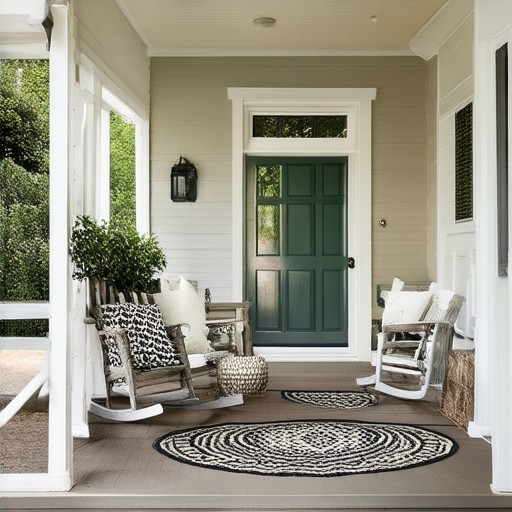
What is a Modern Farmhouse Style?
Modern farmhouse style is a design aesthetic that blends the simplicity and functionality of contemporary living with the warmth and charm of rural or countryside aesthetics. This style emphasizes minimalism, natural materials, and a relaxed, inviting atmosphere, making it popular among homeowners seeking a unique and timeless look.
Key Characteristics of Modern Farmhouse Style
- Neutral Color Palette : The base color scheme typically consists of muted tones like beige, gray, light brown, or white, often accented with softer hues like sage green or mustard yellow.
- Clean Lines and Minimalist Furniture : Modern farmhouse interiors often feature streamlined, geometrically simple furniture pieces that avoid excessive ornamentation.
- Layered Textures : The use of various textures, such as smooth wood finishes, textured wallpaper, or woven fabrics, creates depth and interest within the space.
- Natural Materials : Elements like natural wood, stone, and metal are frequently incorporated to bring an organic, earthy feel to the design.
- Rustic yet Contemporary Aesthetics : Modern farmhouse style combines traditional rural elements, such as exposed brick, beam ceilings, or iron accents, with sleek, modern-day furnishings.
Common Features of Modern Farmhouse Interiors
- Natural Wood and Stone : These materials are often used for flooring, countertops, and wall cladding to evoke a sense of nature and durability.
- Open Layouts : Many modern farmhouses feature open-concept living areas that foster a sense of spaciousness and connectivity between rooms.
- Large Windows : Ample natural light is a hallmark of this style, with windows often spanning from floor to ceiling to showcase the surrounding landscape.
- Cozy Seating Areas : Comfortable, overstuffed sofas and chairs, often placed near fireplaces or under large windows, create intimate gathering spots.
Modern Farmhouse Design Elements
- Lighting Fixtures : Pendant lights, lantern-style lamps, or Edison bulbs are commonly used to add a warm, inviting glow to spaces.
- Wall Art and Decor : Framed artwork, vintage signs, or antiques are often displayed to add personality and history to the room.
- Textured Wall Treatments : While traditional barn wood walls are popular, modern farmhouse styles may also opt for textured wallpapers or painted finishes that mimic the look of weathered wood.
Exterior Design
The modern farmhouse style extends to the exterior, with features like:- Porches and Decks : Often adorned with swing chairs or benches, these spaces encourage relaxation and socializing.- Shutters and Wood Shutters : These window treatments add to the rural charm while providing privacy and protection.- Gardens and Landscaping : Thoughtfully designed outdoor spaces, complete with flower beds, herb gardens, or outdoor seating areas, complement the overall aesthetic.
By combining the best of contemporary design with the essence of rural life, modern farmhouse style creates a welcoming and enduring living environment that appeals to a broad range of tastes.
What Trend Is Replacing Modern Farmhouse?
The modern farmhouse aesthetic, characterized by its blend of rustic charm and industrial elements, is gradually being replaced by several emerging design styles. These new trends offer fresh perspectives while still drawing inspiration from the farmhouse ethos.
1. Elevated Rural
Elevated Rural combines the essence of farmhouse living with refined sophistication. This style emphasizes clean lines, natural materials, and a focus on functionality. Think of open-concept spaces with soaring ceilings and large windows that invite the outdoors in, paired with sleek, minimalist furniture. Elevated Rural also incorporates subtle metallic accents and earthy tones to create a harmonious yet elevated look.
2. Transitional Cottage
The transitional cottage style is gaining popularity as it bridges the gap between modern and traditional design. This style often features rich, muted hues like mushroom, burgundy, and sage green, complemented by darker wood tones. Its warmth and depth make it ideal for cozy, inviting spaces, often incorporating vintage finds and eclectic pieces to create a lived-in feel.
3. Minimalist Farmhouse
Minimalist Farmhouse takes the farmhouse concept and streamlines it, focusing on simplicity and functionality. This style prioritizes clean lines, ample natural light, and a neutral color palette. Minimalist Farmhouse eschews clutter, emphasizing instead the beauty of unadorned surfaces, open spaces, and the occasional pops of vibrant color or texture.
4. Boho Chic Farmhouse
Boho Chic Farmhouse merges the laid-back vibe of bohemian style with farmhouse elements. This trend embraces global textures, patterns, and eclectic decor, creating a unique visual narrative. Think of woven baskets, macramé wall hangings, and a mix of weathered wood with bold, jewel-toned accents to achieve this look.
5. Contemporary Maximalist
Contemporary Maximalist Farmhouse is a bold take on the traditional farmhouse, blending high-end finishes with dramatic design elements. This style often features grand architectural details, statement lighting, and a mix of modern and classic furnishings. It’s about creating a luxurious yet grounded space that pays homage to farmhouse roots.
Each of these trends offers a fresh interpretation of farmhouse living, reflecting evolving tastes and lifestyle preferences. Whether you prefer the understated elegance of Elevated Rural or the eclectic charm of Boho Chic Farmhouse, there’s a farmhouse style to suit every taste.
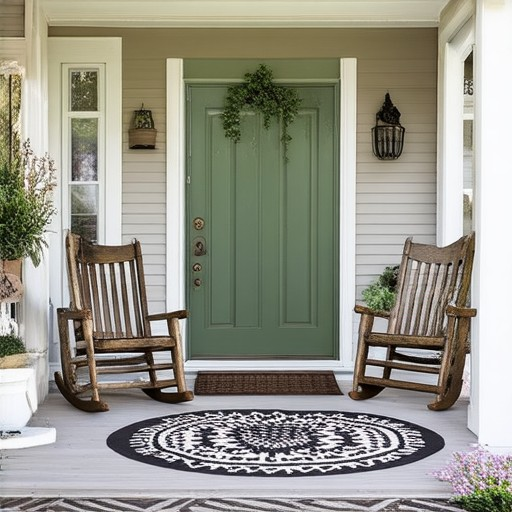
What is the difference between modern and traditional farmhouse style?
To understand the distinction between modern and traditional farmhouse style, let’s break down their unique characteristics and design elements:
| Modern Farmhouse Style | Traditional Farmhouse Style |
|---|---|
| Design Aesthetics: Clean lines, minimalist furniture, and a focus on simplicity with a touch of industrial or natural elements. | Design Aesthetics: Classic, cozy, and rustic with a strong emphasis on vintage and handcrafted items. |
| Color Palette: Neutral tones with pops of color inspired by nature, often incorporating muted tones and earthy hues. | Color Palette: Warm, inviting colors with a focus on natural tones and floral patterns. |
| Furniture: Sleek, low-country-inspired pieces with a mix of industrial and organic elements. | Furniture: Handcrafted, antique, or vintage furniture with intricate details and a weathered look. |
| Lighting: Utilitarian lighting fixtures combined with ambient lighting to create a relaxed atmosphere. | Lighting: Soft, warm lighting that highlights the warmth and coziness of the space. |
| Materials: Smooth, polished surfaces like concrete, metal, and glass to contrast with natural textures. | Materials: Rough-hewn wood, stone, and iron to emphasize the organic and tactile qualities of the home. |
Key Differences
- Functionality vs. Aesthetic Appeal: Modern farmhouse style prioritizes functionality and clean lines, while traditional focuses on aesthetic appeal and historical preservation.
- Cultural Context: Modern draws inspiration from contemporary design trends, whereas traditional reflects timeless rural living practices.
- Space Utilization: Modern often features open, multipurpose spaces, while traditional emphasizes defined rooms with distinct purposes.
Example of Each Style
- Modern Farmhouse: A recently renovated country home with large windows, a neutral color scheme, and a mix of industrial and natural decor elements.
- Traditional Farmhouse: An older home with wooden beams, antiques, floral wallpaper, and a cozy, lived-in feel.
Choosing Your Style
Your choice depends on your personal preference and lifestyle. Modern farmhouse offers a fresh, updated take on rural living, while traditional provides a nostalgic connection to history and heritage. Both styles can be adapted to suit various architectural designs and personal tastes.
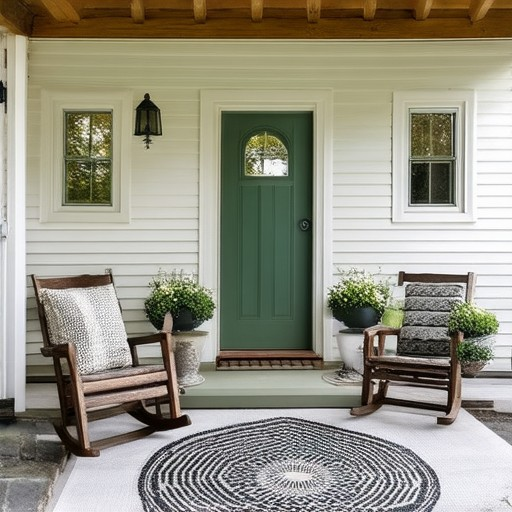
Best Colors for a Modern Farmhouse
The best colors for a modern farmhouse blend timeless neutrals with subtle warmth and personality. Here’s a curated selection of paint colors and design elements that capture the essence of this style:
Wall Colors
- Soft Neutrals : Opt for muted whites like “Misty White” or soft grays such as “Dove Gray” to create a clean, calming backdrop.
- Warm Accents : Introduce warmth with a pale terracotta or a light taupe, offering a subtle contrast against the neutral tones.
Trim and Details
- Rich Wood Tones : Add depth with dark wood tones, such as weathered oak or charcoal finishes, to complement the neutral palette and enhance architectural details.
Accent Colors
- Earthy Hues : Incorporate unexpected pops of color with Farrow & Ball’s “Pigeon Poop” or “Mouse’s Blood” for a touch of personality that ties the room together.
Competitor Resources
- Explore complementary styles and color palettes with guides from Peck and Gartner and Benjamin Moore .
Seasonal Touches
- Spring : Introduce light blue or green accents for a fresh, airy feel.
- Fall : Use warm orange or amber tones to evoke a cozy autumn vibe.
- Winter : Opt for cooler grays or deep navy blues to create a serene environment.
Flooring and Fabrics
- Flooring : Choose wide plank wood floors in natural tones to ground the space.
- Fabrics : Enhance texture with linen or velvet curtains and upholstery for a refined, inviting atmosphere.
By thoughtfully selecting these colors and elements, you can create a modern farmhouse that feels both stylish and inviting, blending the best of traditional and contemporary design.
Modern Farmhouse Color Palette for Furniture
The modern farmhouse style is characterized by its understated elegance and timeless appeal. When it comes to selecting the right color for furniture, neutral tones remain a cornerstone of this aesthetic, offering versatility and sophistication. Here’s a breakdown of the ideal color choices for modern farmhouse furniture:
- Neutral Tones: Warm whites, soft grays, and muted beiges form the backbone of a modern farmhouse color palette. These neutrals create a serene and inviting atmosphere, allowing other design elements to stand out.
- Muted Accent Colors: Introduce soft, muted tones like sage green, muted teal, or deep mustard to add depth and interest. These colors complement the neutrality while bringing a touch of nature indoors.
- Pops of Contrast: Incorporate deeper hues like navy blue or charcoal gray for statement pieces. These darker tones add contrast and create a cozy, lived-in feel, which is quintessentially farmhouse.
To achieve the perfect balance, pair light, airy neutrals with richer textures and finishes. Consider mixing light gray with soft white for a subtle contrast, then introduce a pop of teal or green for a fresh, countryside vibe. For a touch of warmth, opt for deep navy or charcoal gray accents that tie the room together seamlessly.
Example: A light gray sofa paired with a white-washed coffee table and a teal-colored armchair creates a harmonious yet dynamic space. The combination of these colors ensures the room feels grounded yet vibrant, embodying the essence of modern farmhouse style.
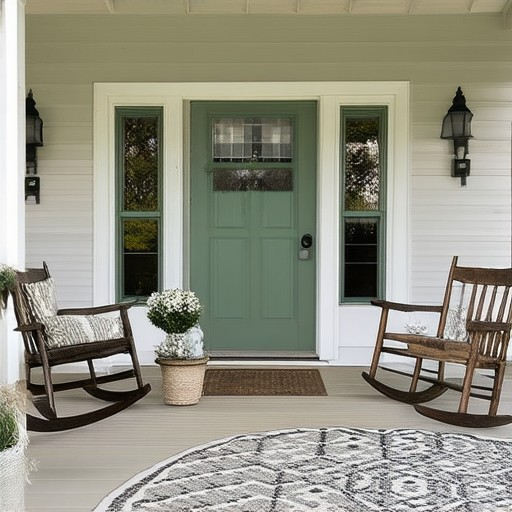
Rich Farmhouse Colors
The term “farmhouse style” evokes imagery of cozy, rustic interiors that blend comfort with a touch of elegance. One of the most striking aspects of this style is the thoughtful selection of color palettes. Rich, warm colors dominate farmhouse aesthetics, creating a welcoming and inviting atmosphere. Here’s a breakdown of some standout color choices that define modern farmhouse interiors:
- Earthy Tones: Colors like terracotta, burnt sienna, and muted browns bring warmth and grounding energy to a room. These hues work exceptionally well in sunlit spaces and complement natural materials like wood and stone.
- Muted Blues: Soft, dusty blue shades, such as “French Blue” or “Periwinkle,” add a calming essence to a space. These colors are versatile and can pair beautifully with neutrals or brighter accents.
- Greiges and Grays: Neutral tones like “Agreeable Gray,” “Kendall Charcoal,” and “Iron Ore” remain timeless in farmhouse settings. These colors provide a sleek backdrop for richer textures and patterns.
- Warm Yellows: Golden yellows and warm creams can add a pop of brightness to otherwise neutral rooms. These colors are perfect for creating a cozy feel and can be balanced with cooler tones for contrast.
- Rustic Reds: Deep reds, such as “Carmine” or “Rust,” introduce a bold statement while maintaining a traditional farmhouse vibe. These colors are ideal for accent pieces like curtains or furniture.
- Earthy Greens: Subtle green tones, like “Mint Leaf” or “Green Apologies,” bring life to a space without overwhelming it. These colors are excellent for walls in smaller rooms or as accent pieces.
- Black and White: Classic combinations of black and white create a crisp, clean look that complements farmhouse aesthetics perfectly. These colors can be used for trim, flooring, or decorative accents.
When selecting colors for your farmhouse, consider the overall mood you wish to evoke. Darker tones like deep navy or charcoal can add drama, while lighter, airy colors like soft whites or pastels can create a serene environment. Pair these colors with natural fabrics, wooden tones, and plenty of texture for a truly authentic farmhouse feel.
For more inspiration and design tips, explore our farmhouse design guides and discover how to curate a space that feels distinctly yours.

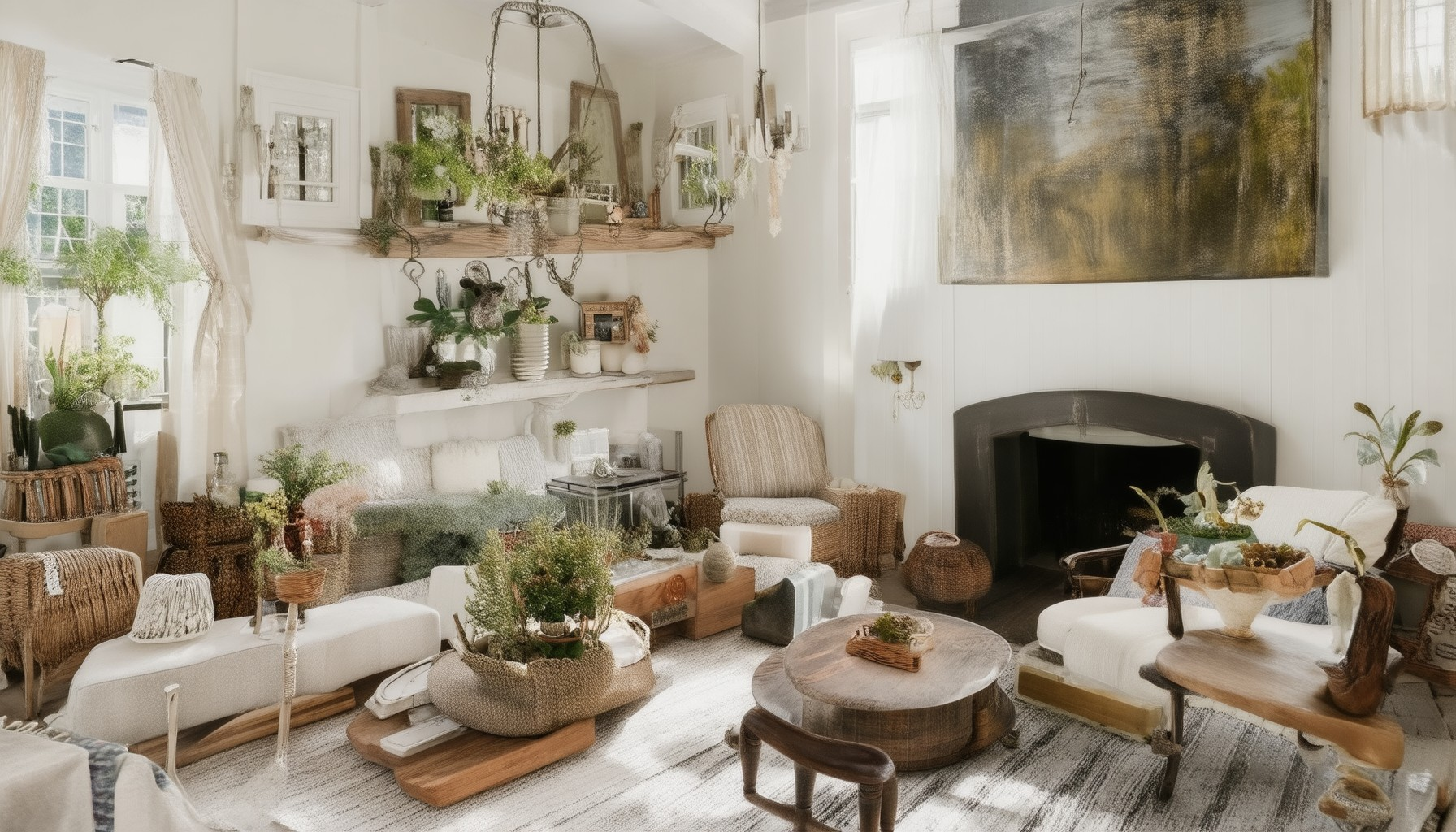



0 Comments